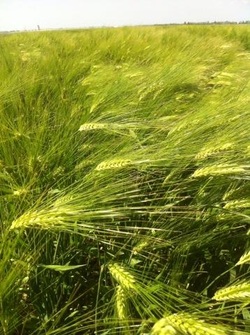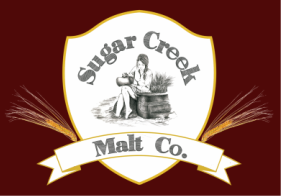 In this year alone our state is expected to double its amount of breweries. For this reason, among others, I am starting a craft malthouse in Indiana using locally grown small grains. Great idea, right? I think so. With the craft beer industry on the rise, it seems that Hoosiers simply can’t get enough. Likewise, as a growing trend, many customers who enjoy the craft beers want to know where the food and beverage ingredients come from and how they are handled. This is where Sugar Creek Malt Co. comes in. Craft brewers and home brewers love to experiment and play with new kinds of malts, and most of them are willing to pay more for a malt that has been grown locally, which allows them to not only know the maltster, but also the farmer and what field their malt comes from. So why are there not dozens of craft maltsters in the state?!?!?!?! I will give you three reasons spread out over 2 blogs. Sorry if they are lengthy. There are just many things that need to be discussed to understand the issues an Indiana maltster faces. Mountain 1: What do you need to make the majority of malt used in breweries? Answer= Barley Easy answer, right? Grow some barley. Well Sugar Creek Malt has figured out that is easier said than done. My family has been farming in Indiana for generations. We know the ins and outs of grains that are grown in our state. The problem is that barley has not been grown in our state for many decades. In Indiana there are 3 grains— really 2 grains. Corn and soybeans are the main two crops, beating out wheat by a wide margin. If you were to ask a farmer in Indiana if he would grow barley, let alone malt-quality barley, that farmer will look at you like you are crazy. So why is there no barley grown in Indiana now? I had to go all the way to Fargo, North Dakota to get to the bottom of this question. I have spent this week at North Dakota State University attending a barley field course. There I was able to learn everything from the history of the barley market to current barley growing practices. Historically, barley was the second plant to be domesticated. Ever. This happened at the beginning of civilization around 10,000 BC in present day Iraq. Side note, there are historians that believe that agriculture, which then led to the written language, civilization, medicine, technology, pretty much everything we have today, was actually because ancient people wanted more barley to make more beer! Think about that. No barley = No beer = No Agriculture = No Civilization = You and me out hunting and gathering still today. Crazy. Anyway, barley is found in the wild and was first domesticated in a fairly dry area. Our current varieties still do not like wet humid climates. Therefore Indiana is not the best climate to raise barley in. However, this does not mean it can’t be done. There are two types of barley: Feed barley, grown to feed livestock, and malting barley, grown to make into malt and eventually beer. The barley that used to be grown in Indiana was primarily, if not completely feed grade barley. Malt grade barley must be lower in protein, lower in beta glucagon, managed in the field extremely carefully, and harvested and stored extremely carefully. Our present day corn and soybeans really are quite easy to grow. Some North Dakota barley growers may say they are “idiot proof.” So with higher prices for corn and soybeans and government subsidies for corn and soybeans, the few farmers in Indiana that grew feed barley and wheat changed to only corn and soybeans. Also 80% of all barley grown currently is malt barley. Because corn and soybeans are so available, nobody needs barley to feed to animals. Therefore all of the barley grown in our nation, which is not much in the grand scheme of things, is grown in North Dakota, Montana, and Idaho; Ironically, it's primarily malting barley. Because of this all of the research that has gone in to variety selection for barley has made barley grow really well in North Dakota, Montana, and Idaho…, but not so great in Indiana. Fantastic. So here are our problems and how we are overcoming them 1. Indiana is not the easiest climate to grow barley in. It’s not impossible, but it’s definitely not as easy as corn and soybeans. We have to scout our fields at least a year in advance to understand the soil type and pick our best fields that barley will grow in. We also have to spend more time in our barley fields observing how the crop is growing and managing any problems that may occur. This can be very time consuming, much more than that with corn/soybeans. 2. Farmers in Indiana have completely lost all of the knowledge of how to grow barley. We have to act as educators and teach the common practices that must be followed in order to grow a high quality malting barley in Indiana. We must spend the time to learn these practices ourselves and then spend even more time educating the farmers as well. 3. The current barley varieties have been bred for the northern states, none for Indiana. Sugar Creek Malt Co. is conducting a variety field trial next spring. This will allow us to test 15-30 heritage varieties, current varieties, and even experimental varieties not yet released to farmers. This will allow us to choose the best varieties for our climate. This will take a large amount of time and planning. So although there are many issues that we are trying to overcome just in the growing process of malting barley Sugar Creek Malt Co. is extremely excited to tackle these hurdles and bring malting barley to Indiana and Indiana brewers. Check back in for the next mountain we are climbing.
3 Comments
|
Details
AuthorProviding our LOCAL breweries with LOCAL malt! Archives
August 2020
Categories |

 RSS Feed
RSS Feed